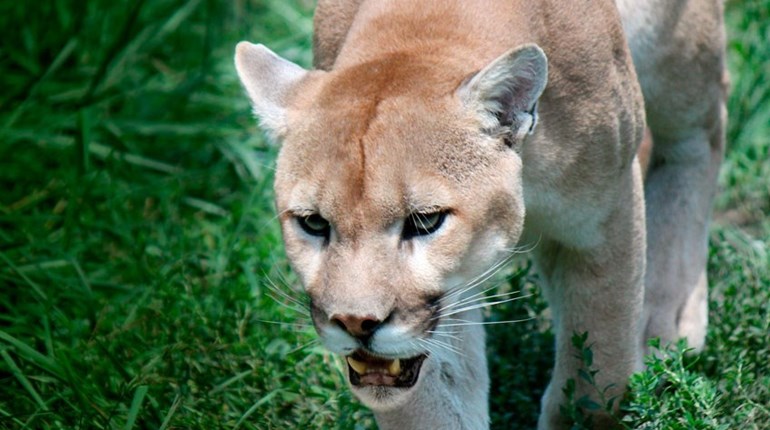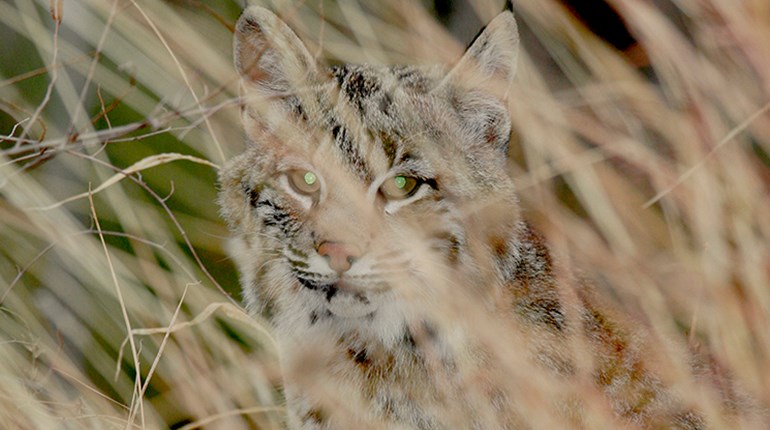
Known as a "wildcat," "bobcat" or "bob-tailed cat," there are 13 subspecies of Lynx rufus; quizzical-looking, short-tailed creatures with beautiful camouflage-patterned fur and tufted ears whose habitat covers most of the contiguous U.S. states. With a lifespan in the wild of about 12 years, males top out below 40 pounds and are roughly 19 to 49 inches long. Females may be half that, or weigh less than a large housecat. Bobcats are territorial; they usually have one permanent den, and auxiliary ones at the far edges of their range. They mark their territory with their urine and feces and by scratching trees (much as your family cat might claw the furniture).
After a two-month gestation period, kittens are born between April and June in litters of six or less. Already covered with fur (and spots), they'll learn to find their own food by 8 or 9 months of age and are off on their own before a year has passed.
Sneaky and fast, these cats can leap 10 feet to pounce on their prey. When active at night you'll likely never view a bobcat, but at dusk or early morning you might see this solitary predator padding about on large, soft paws.
While they will take down a deer or feast on the remnants of another animal's kill, covering it and returning to consume the cache, they will also add insects, reptiles, piglets, lambs--and a pet dog or cat--to their usual diet. Their preferred food is small mammals (rabbits, hares, squirrels, mice) and birds.
Bobcats are hunted for sport and trapped for their unusual, multicolored fur; check local regulations.







































